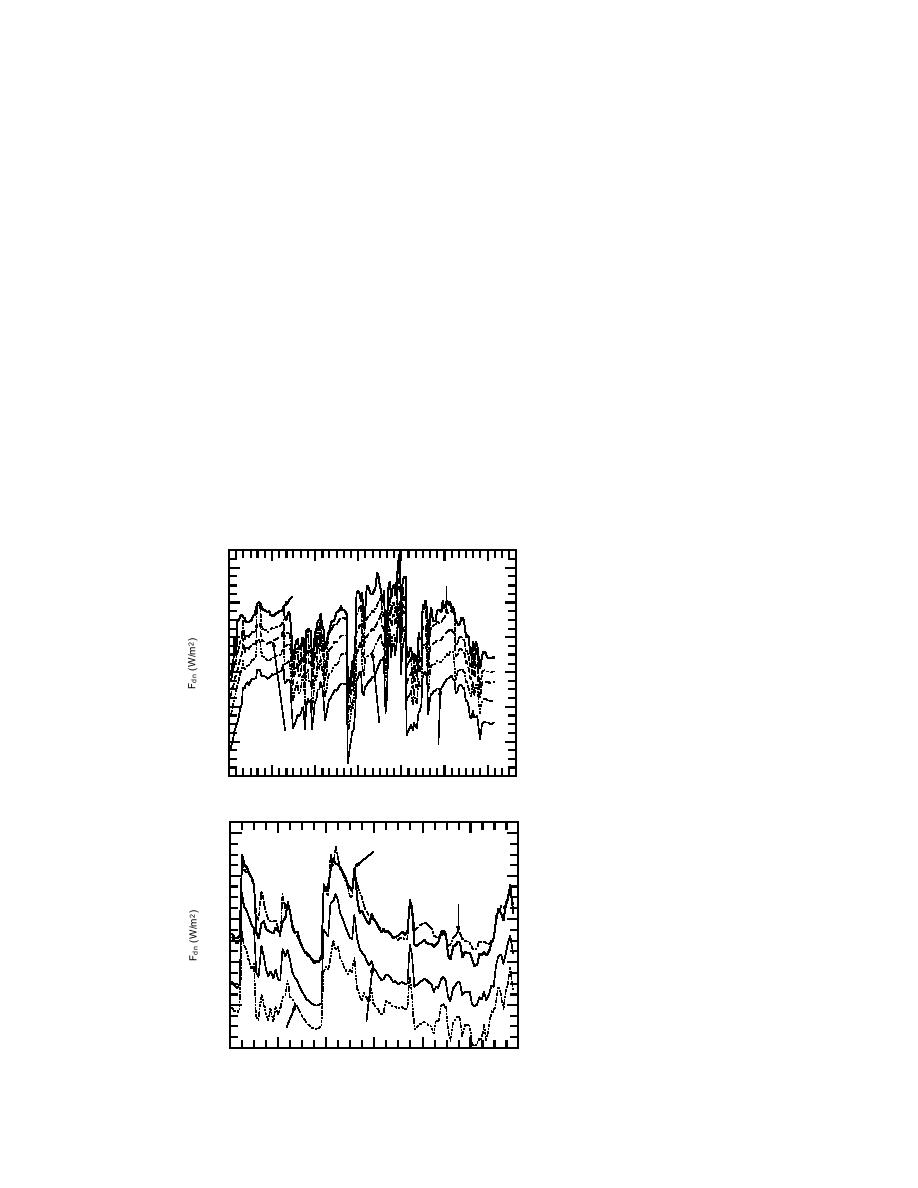
On studying Table 8, we see that the best agreement between the observations
and the various incoming longwave parameterizations that we are considering is
for Knig-Langlo and Augstein's (1994) method. With this parameterization, the
difference between the measured values and those calculated with eq 12 (i.e., the
Fdn rows in Table 8) does not exceed 4%. This is approximately the experimental
error in Fdn. Maykut and Church's (1973) parameterization is also good, but not
quite as good as KL&A's. The other three parameterizations for Fdn in Table 8 are
significantly worse.
Although in Table 8 the error in evaluating B for clear skies (02 column) is of
the order of 10%, the error increases to 100%, if we consider all the observations
(010 column) during the month. Notice, too, for overcast skies (810 column),
when the absolute values of B are small, even the sign of B changes. Remember,
the value of the longwave radiation balance, calculated from experimental data,
represents a small difference between large values of Fdn and Fup and, accordingly,
has a large relative error. Consequently, parameterizing it is difficult. Neverthe-
less, the data from ISW confirm that the recent parameterization for incoming
longwave radiation by KL&A is good for polar seas covered by ice during the polar
night.
Figure 10 shows the temporal variability of the incoming longwave radiation
for May observed on ISW and estimated with the five parameterizations under
260
KonigLanglo
810 tenths
& Augstein
Observed
240
Figure 10. Measured incoming
220
longwave radiation during May
1992 on Ice Station Weddell and
200
predictions of it using the equa-
tions of Brunt, Marshunova,
180
Maykut and Church, Satterlund,
Brunt
Maykut & Church
and Knig-Langlo and Augstein.
160
Marshunova
The upper panel is a temporal
140
sequence when the total cloud
0
30
60
90
120
150
180
amount was 8 to 10 tenths.
Observation Number
Satterlund's scheme produces
200
estimates between the Brunt and
02 tenths
Observed
Maykut and Church estimates
and is, thus, left out of this panel
180
KonigLanglo
for clarity. The lower panel is for
& Augstein
observations when the total cloud
160
amount was 0 to 2 tenths. Because
Maykut and Church's scheme
140
produces estimates similar to
KL&A's and because Satter-
120
lund's scheme yields results simi-
Marshunova
lar to Marshunova's, we leave
Brunt
100
these two traces out of this panel
0
20
40
60
80
100
120
for clarity.
Observation Number
17



 Previous Page
Previous Page
